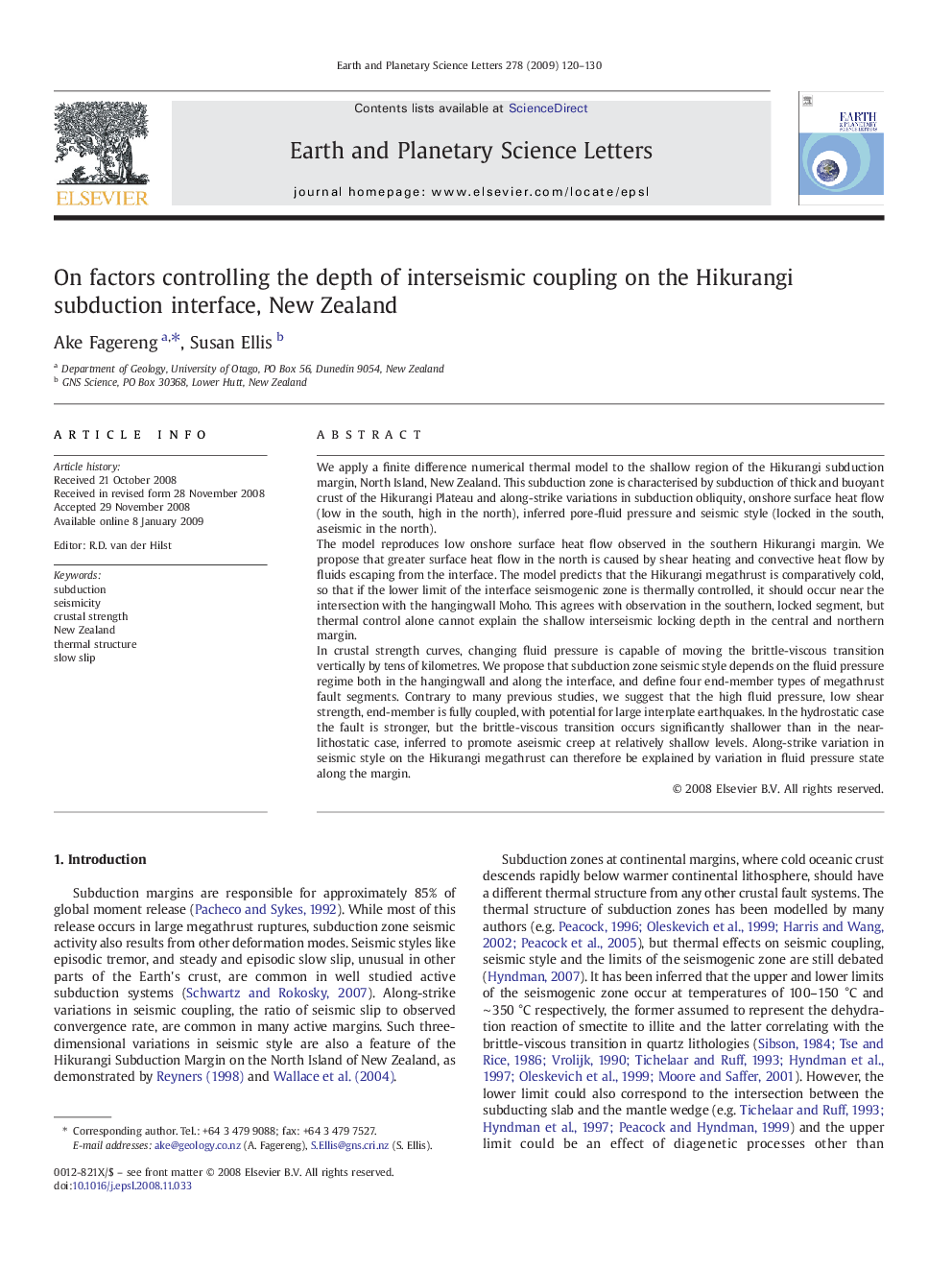| کد مقاله | کد نشریه | سال انتشار | مقاله انگلیسی | نسخه تمام متن |
|---|---|---|---|---|
| 4679309 | 1634880 | 2009 | 11 صفحه PDF | دانلود رایگان |

We apply a finite difference numerical thermal model to the shallow region of the Hikurangi subduction margin, North Island, New Zealand. This subduction zone is characterised by subduction of thick and buoyant crust of the Hikurangi Plateau and along-strike variations in subduction obliquity, onshore surface heat flow (low in the south, high in the north), inferred pore-fluid pressure and seismic style (locked in the south, aseismic in the north).The model reproduces low onshore surface heat flow observed in the southern Hikurangi margin. We propose that greater surface heat flow in the north is caused by shear heating and convective heat flow by fluids escaping from the interface. The model predicts that the Hikurangi megathrust is comparatively cold, so that if the lower limit of the interface seismogenic zone is thermally controlled, it should occur near the intersection with the hangingwall Moho. This agrees with observation in the southern, locked segment, but thermal control alone cannot explain the shallow interseismic locking depth in the central and northern margin.In crustal strength curves, changing fluid pressure is capable of moving the brittle-viscous transition vertically by tens of kilometres. We propose that subduction zone seismic style depends on the fluid pressure regime both in the hangingwall and along the interface, and define four end-member types of megathrust fault segments. Contrary to many previous studies, we suggest that the high fluid pressure, low shear strength, end-member is fully coupled, with potential for large interplate earthquakes. In the hydrostatic case the fault is stronger, but the brittle-viscous transition occurs significantly shallower than in the near-lithostatic case, inferred to promote aseismic creep at relatively shallow levels. Along-strike variation in seismic style on the Hikurangi megathrust can therefore be explained by variation in fluid pressure state along the margin.
Journal: Earth and Planetary Science Letters - Volume 278, Issues 1–2, 15 February 2009, Pages 120–130